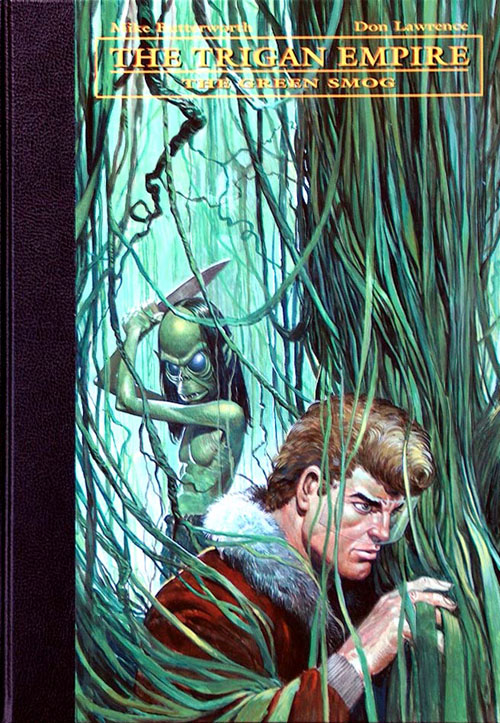
That same afternoon, Dutch publishers Oberon offered him the contract he wanted, and he never looked back.įor their weekly Eppo in 1977, Lawrence and writer Philip Dunn created a variation on Flash Gordon entitled Storm. When IPC refused to raise his page rate, or pay royalties, for the numerous foreign Trigan Empire collections, Lawrence resigned. Unlike other publishing spheres, British comics paid their artists only once for their work, and they received nothing for reprints, translations or other rights.

#Trigan storm series
While maintaining this demanding output, he still found time to draw The Adventures Of Tarzan, Gerry Anderson's puppet series Fireball XL5 (for TV Century 21) and Thunderbirds Are Go (for the Daily Mail), as well as the titillating Carrie for Mayfair magazine.

Continuing weekly in the children's educational part-work, Look And Learn, for 11 years, Lawrence illuminated 950 hyper-realistic pages of this blend of Roman-style epic and science fiction fantasy. With its sweeping vistas, battles, and vivid heroes and villains, The Trigan Empire (written by Mike Butterworth) chronicled the blond warrior Trigo's rise to power on the planet Elekton. On the basis of these, he was commissioned to paint a comic story (written by Mike Butterworth), to be printed in full-colour photogravure for the new weekly Ranger in 1965. He developed his meticulous linework and clear story-telling on Billy The Kid and Pony Express, and his ink washes gave an added realism to his strip version of the television series Wells Fargo.ĭuring the early 1960s, reflecting Hollywood's taste for action movies set in ancient times, Lawrence branched out into rugged, historical sagas, featuring a former British slave character, Olac the Gladiator, for Tiger, as well as the axe-wielding heir Karl the Viking, and the Saxon strongman Maroc the Mighty, written by Michael Moorcock, both for Lion. In 1958, he left Anglo for better rates elsewhere.

In a less minimalist style, he also drew cowboys Daniel Boone, Wyatt Earp and Davy Crockett. Paid only £1 per completed page, Lawrence quickly learned to simplify his rendering to achieve the cartoon look of Marvelman, and could turn out up to 10 pages a week. Rather than drop their British editions, Miller engaged Anglo the following year to create virtual lookalikes, and Lawrence contributed greatly to the success of Marvelman, Young Marvelman and The Marvelman Family, arguably the first British superheroes. In 1953, when DC Comics finally won a protracted lawsuit claiming plagiarism of Superman, Fawcett had no choice but to cancel the titles.

(These American comic books were banned as imports to help Britain's postwar recovery.) Leading publishers Amalgamated Press rejected his samples in 1954, but when Lawrence approached entrepreneur Mick Anglo's Gower Studios, he was hired on the spot to join a band of freelancers supplying publishers with cheap, ready packages of comic-book stories.Īn Anglo client, L Miller & Son, enjoyed healthy sales with their black-and-white reprints of New York publisher Fawcett's superheroes Captain Marvel, Captain Marvel Junior and The Marvel Family. In 1949, after two years' army service, he studied art for four years at the Borough Polytechnic, where he much preferred figurative art to the vogue for abstract expressionism.Ĭomics had not occurred to him as a career path until a visiting lecturer spurred him to try breaking into the field. Evacuated during the war, he completed his schooling in Crawthorn, Berkshire. But he found recognition and reward in Europe, illustrating the 23 albums of the science-fiction series Storm, which has sold more than 2m copies worldwide, most recently in translation in Poland and Indonesia.īorn in East Sheen, London, the youngest of three children, Lawrence went to St Paul's school, Hammersmith, where he took refuge from academic studies by immersing himself in drawing. The artist Don Lawrence, who has died aged 75, toiled for more than two decades in anonymity - and for meagre payment - in British adventure comics, most famously painting two colour pages each week of The Rise And Fall Of The Trigan Empire from 1965 to 1976.


 0 kommentar(er)
0 kommentar(er)
